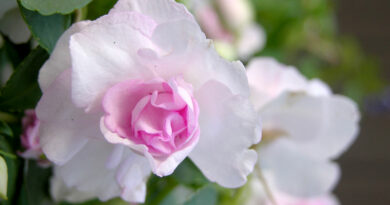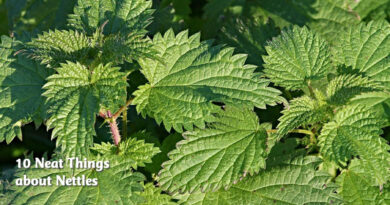About Berries

Gooseberries are true berries
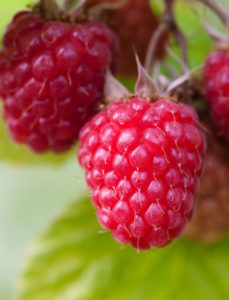
Raspberries
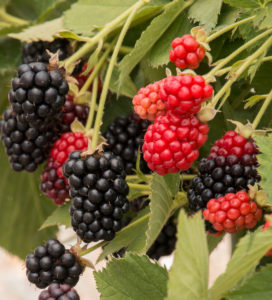
Blackberries

Saskatoon berries
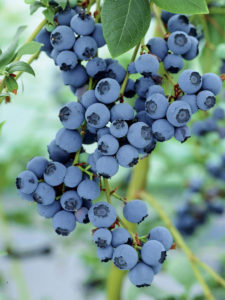
Blueberries
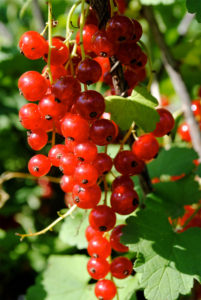
Currants
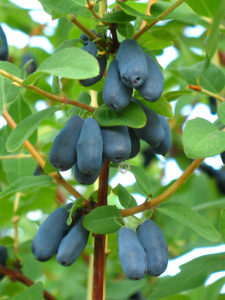
Honeyberries
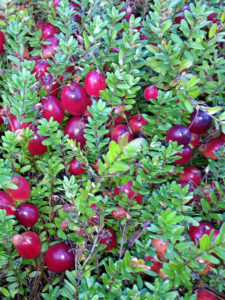
Cranberries
1. A tomato is a berry, a blueberry is not.
A berry is botanically defined as a simple fruit developed solely from one ovary. Most of the small fruits we call berries are actually other things, like drupes or aggregate fruits. They are formed from more parts of the blossom than simply a single ovary. I can think of only one small fruit with berry in its name that is a true berry: the gooseberry. Other true berries are: currants, grapes, lychees, avocadoes, eggplants and persimmons. “False berries” include raspberries, blackberries, blueberries, serviceberries and strawberries. Maybe botanists should have gone with a different name.
2. Raspberries have perennial roots but biennial canes.
A raspberry patch can produce for over 20 years from the original root, but the canes (the woody part above ground) don’t last so long. The canes emerge and grow in their first year, then fruit and die in their second year. As a raspberry grower, you must remove these spent canes every year or your patch will be overrun with dead wood, which inhibits air circulation and promotes disease.
3. The boysenberry is less than 100 years old.
It’s a cultivated cross between a loganberry, a raspberry and a Pacific blackberry. It was developed by Rudolph Boysen in 1923 and perfected at Knott’s Berry Farm—when it was a berry farm and not an amusement park—where it was first sold in 1935. They aren’t very winter hardy and they do not travel well so you rarely see fresh boysenberries for sale in Canada.
4. Blackberries versus raspberries.
Blackberries and raspberries are both of the same genus, Rubus, but blackberries are of the subgenus Eubatus while black raspberries are of the species R. occidentalis. If you don’t care about all that Latin gobbledygook, you may be interested to know that black raspberries have a different flavour from either blackberries or red raspberries and they don’t hold onto that hard little core, like blackberries, when you pick them. Black raspberries are also native to Canada.
5. Saskatoons grow wild in parts of the Yukon.
These berries are hardier than any other fruit except lowbush blueberries. As any self-respecting Westerner knows, saskatoon berries are perfectly delectable fruit, high in pectin, and excellent for making jams and pies or for eating ripe. In southern Ontario, saskatoons are known as serviceberries and grown mostly as an ornamental. Too bad!
6. Currants are grapes.
To make dried currants, you don’t start with black or red currents. Dried currents actually come from a grape commonly called a Zante grape. Since learning this, I’ve been wondering what a black currant would taste like dried. I bet it would be good!
7. Honeyberries come from honeysuckle shrubs.
Specifically the honeysuckle Lonicera caerulea. If you haven’t come across them yet, honeyberries look like elongated, cylindrical blueberries, and the taste is similar. The care and culture required is far simpler, though. The species grows wild in boreal forests around the world, but Russian botanists have been developing high-yielding cultivars for about 50 years. These newer cultivars are just starting to gain attention in Canadian gardens.
8. Try growing blueberries in a container.
The greatest difficulty with growing blueberries is giving them low-pH soil. You can add a pile of aluminum sulphate to a section of your garden to raise acidity, but it will leach away. If you grow the plants in large containers, though, it will be easier to maintain the acidic level without damaging other plants. For winter, it is safest to sink the planted container into the ground for protection. (You can also keep a sunken container in the ground year-round.)
9. Why nobody grows their own cranberries.
The cranberry is a close relative of the blueberry but it’s even harder to cultivate in the typical garden. It’s a bog plant. (This is the Vaccinium macrocarpon cranberry, not the Viburnum trilobum highbush cranberry.) Commercial cranberry cultivation no longer takes place in wetlands; instead, it is done on engineered ground capable of being flooded. The plants aren’t grown in standing water all year. The fields are flooded at harvest time and the berries are “beaten” off the vines so they float to the surface. The fields are left flooded through the winter to protect the plants.
10. The strawberry isn’t a berry; it isn’t even a fruit.
Botanically speaking, the strawberry is a false fruit because it isn’t formed from the plant’s ovaries by from a bowl-shaped organ (the hypanthium) that holds the ovaries. Dang botanists ruin all our fun.
-Shauna Dobbie Copyright©
Pegasus Publications Inc


